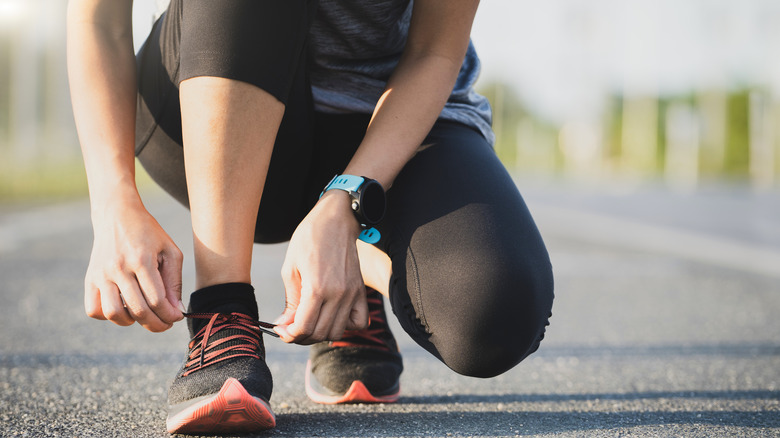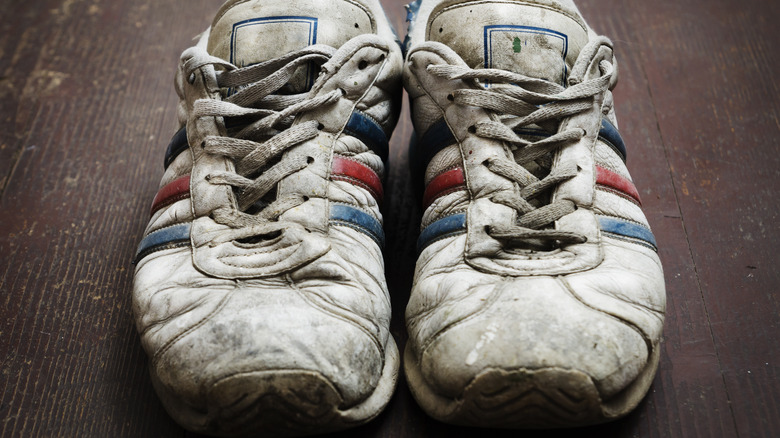You Should Never Wear These Shoes While Working Out
It's important to wear a good pair of shoes when you're working out. Whether you wear running or training shoes, using shoes that support your body can help improve the effectiveness of your workout and even reduce your risk of injury. But whatever you do, don't wear shoes that are worn out (via Women's Health). That's because old and worn-out sneakers don't provide your feet and legs with enough protection while you're working out.
Over time, the bottoms of your shoes begin to flatten and wear out. Generally speaking, shoes with thin bottoms tend to provide less cushion and shock absorption. This can disrupt your posture and throw off the alignment of your entire body, which is not good for your hips, knees, and feet. In fact, wearing worn-out and ill-fitting shoes can cause your feet to roll inward or outward (via Healthline). This can potentially lead to ankle injuries, back-and-hip pain, plantar fasciitis, and stress on the knees.
How to know when to replace your shoes
So how do you know when it's time to get new shoes? As a general rule of thumb, you should replace your sneakers with a new pair every 300 to 500 miles (via HuffPost). This can generally take between six and eight months. However, if you're very active and used to running or walking long distances, you might reach this limit as early as three months.
You can also tell if it's time to get a new pair of shoes by looking for physical signs of wear and tear. "Running shoes are designed to be flexible in the forefoot because that's where your bones are flexing, so if you're seeing flexibility in the forefoot, that's not a super big concern," Brittany Gleaton, an associate footwear product line manager at Brooks Running, told HuffPost. "But if it starts to flex in the midfoot and heel, that's a really good sign that you need a new shoe because shoes are not designed to be flexible in those parts of the foot." Another indicator that your shoes are worn out is if they feel weak and the midsole breaks down. Furthermore, if the tread and outsoles begin to flatten and wear out, that's a good sign that it's time to replace your shoes.


